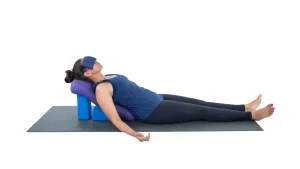
Yoga and Pilates are two of the most sought-after exercise options for those looking to enhance their overall health. But there are some key distinctions between them that may make it difficult to decide which one you should prioritize when looking to maximize results.
Both exercises promote mind-body connection, yet each has its own distinct advantages. To help you decide which workout is best suited to you, we asked Gaby Noble from Exhale Pilates London to explain the key distinctions between yoga and Pilates.
Core Strength
A strong core is essential for overall good health. Not only does it prevent injuries, but also supports the spine, improves posture and balance, as well as relieving back pain.
Many exercises target the core, including sit-ups, crunches, planks and squats. But Pilates specifically targets this area by emphasizing breathing while drawing in deep abdominal muscles and the pelvic floor in coordination with movement.
Maintaining a strong core is essential for everyday activities such as walking, climbing stairs, carrying grocery bags or even carrying around an entire laundry basket! Weakened core muscles may lead to swayback posture which increases the risk of lower back pain and injury.
Pilates is a low-impact form of exercise that emphasizes core strength and stability. It comes in various styles, such as mat classes or reformer machines. No matter which one you choose, Pilates works the entire body while strengthening core muscles for people to feel their best and move more safely.
Flexibility
Yoga and Pilates both improve flexibility by stretching muscles. However, Pilates is better at loosening joints while yoga works on strengthening the hamstrings – muscles which facilitate flexibility.
Flexibility is essential for maintaining healthy bones and avoiding injuries as we age. If you want to increase your flexibility, consult with a physiotherapist or clinical Pilates instructor who can identify the source of your inflexibility and provide safe exercises that address that area.
The great thing about yoga and Pilates is that they can be tailored to fit your fitness level, providing a great way to boost overall wellbeing in midlife. Yoga may deepen your meditation practice, aid with balance and flexibility, while Pilates might be better suited for recovering after injury, improving posture and core strength.
Mind-Body Connection
Mind-body exercise programs such as yoga and Pilates are becoming increasingly popular due to their ability to combine physical fitness with stress management and mental health benefits. These exercises offer numerous advantages like pain relief, improved posture and balance, increased range of motion and improved sleep quality.
Meditation and mindfulness are vital for strengthening the mind-body connection, helping to reduce stress, anxiety and depression. These exercises encourage your brain and central nervous system to learn new strategies for dealing with stressful events and emotions, thus improving how your body responds to negative feelings.
Meditation and mindfulness not only offer physical benefits, but they can also benefit your mental health by cultivating positive thoughts and outlooks. A positive mindset not only reduces physical stress but also boosts energy levels throughout the day.
Overall Health
Pilates and yoga are two mind-body exercise practices that can help you reach your overall health and fitness goals. Studies have demonstrated that both can improve cardiovascular and bone health, mental wellbeing, breath control, as well as focus.
They are both popular due to the fact that they require little or no equipment, can be tailored to your fitness level and offer a low-impact workout that doesn’t strain the body. Furthermore, these exercises have been known to prevent back pain, joint injuries and muscle aches.
Yoga and Pilates both increase flexibility, which can increase your range of motion and protect you from injury. Furthermore, these practices encourage good posture to prevent future back and joint discomfort.
Yoga and Pilates both offer mental wellness, which can assist with depression and anxiety. Yoga emphasizes a slower pace with unique breathing techniques to help you relax and focus on your body and breath. It shifts the sympathetic nervous system–which may increase heart rate and blood pressure–to the parasympathetic nervous system, which is calming.








